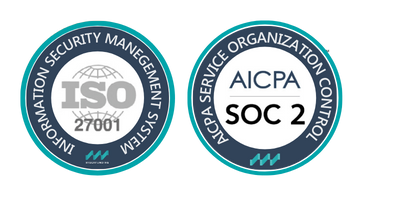After years of virtual conferences & the looming threat of the omicron variant, we weren’t t sure what to expect when landing in Barcelona for Risk Minds 2021.
After almost two years of virtual conferences and with the looming threat of the omicron variant, the Wiserfunding team wasn’t quite sure what to expect when it landed in Barcelona for Risk Minds 2021. Having had a few days to reflect on an excellent event and with 2022 just around the corner, here are four themes that stood out to us and one that was conspicuous by its absence.
Broad Trends
The next couple of years may well become a Risk Management “perfect storm” as three macro trends evolve and collide. First, economies and financial systems were poised for a correction before the pandemic. That cycle was interrupted by lockdown and the tidal waves of cash central banks deployed. There is no precedent for how or when the economic system will return to equilibrium but it is likely to happen over the next 12 to 36 months and it is unclear how bumpy (or not) this process may become as it unfolds. Second, the Financial Services sector adapted quickly to lockdown, in large part by accelerating the transition to digital and delivering in weeks what would have normally taken years. In the medium to longer term, it must continue to digitise, including refreshing core infrastructure and developing greater data and analytics capabilities. The motivation is both about surviving as well as thriving by developing the agility and resilience needed to respond to the next unprecedented challenge and remain relevant to customers. Finally, the third and biggest risk challenge relates to climate change including both transition and physical risk. The time ticking imperative to combat climate change came through loud and clear and it is not just about energy companies. The breadth and depth of change required across all business sectors is extraordinary. Time is short and the healthy scepticism from the Risk community is high – a lot of work is required for business and financial entities to truly understand and drive urgent change. The Baringa and BlackRock presentation by James Belmont and Julien Wallen was both compelling and sobering.
Specific Risks
Moving from macro trends to specific risks; Credit, Cyber and Supply Chain risks were some of the clear concerns stemming from the macro challenges. During the pandemic, defaults almost disappeared as government support sustained both healthy businesses and those that would have naturally closed under normal circumstances. Simply returning to a normal default trend would result in a sharp correction. As inflation rises, government support recedes and “business as usual” remains elusive, the credit correction may be profound when it finally happens. New capabilities and innovation introduce new risks and while cyber risk is not new, the potential for a cyber-attack to shock an increasingly digital business and financial ecosystem has jumped to the top of the Risk agenda. All three macro trends have and will continue to impact supply chain risk; whether that is assessing the viability, reliability or sustainability of global supply chains, supply chain risk is firmly on the Risk radar and its importance will increase in the near to medium term.
The risks are very real but new technology and solutions enabling organisations to see, understand and tackle these risks are impressive. Of course, we are confident our Wiserfunding platform is a critical solution for any institution needing to anticipate, assess and manage SME and Private Company credit risk in a challenging environment. We also learned about cutting-edge solutions from Kovrr to quantify and manage cyber risk and an impressive supply chain platform from Interos that provides layers of visibility inside complex supply chains and ecosystems.
The Human Factor and Complexity
Uncertainty and human decision making amidst complexity was a consistent theme woven throughout Risk Minds 2021. For example, in a discussion around macro trends and stress testing, one member of the audience asked whether it was reasonable to assume that in the next crisis, governments would again deploy central bank balance sheets, as they did in the Great Financial Crisis and as they have done during the pandemic. An assumption the moderator noted was unlikely to be accepted by auditors reviewing official bank stress tests. Another presenter noted that asset values in climate modelling may largely depend on the assumptions made around insurance payouts. Multiple presenters talked about scenario modelling and the importance of each institution thinking through and deeply understanding their scenarios rather than buying scenarios from a third party. Every modelling conversation emphasised the critical importance of human judgement at the end of the day. Organisational culture and maturity were frequently cited as critical investments alongside modelling, data and quantitative capabilities.
Several presentations offered unique perspectives on decision making under uncertainty. Caspar Berry, a former professional poker player, talked about his evolution as a player, noting quantitative, strategic and psychological milestones in his evolution over two years climbing the pyramid to the biggest tables in Las Vegas. John Hulsman, a military professional and geopolitical expert, shared his experience of making decisions under extreme stress and extraordinarily complex situations. One session involved war gaming a complex geopolitical negotiation (where one European colleague assures me he was able to negotiate an agreement with the UK in record time). Clearly, Risk professionals can continue to hone their skills by learning from others who also make complex decisions, under extreme pressure, with limited information and in continuously evolving contexts.
Strategy and Resilience
The fourth theme that really jumped out at Risk Minds 2021 was perhaps best summed up by the Wiserfunding team’s favourite presentation. Hanna Sarraf, CRO at BankMed, gave a fantastic talk framing and then breaking down the components a bank must address to become resilient and thrive in uncertainty. Starting with a high-level framework focusing on four capabilities – Anticipate, Absorb, Recover, Adapt – Hanna went on to unpack 18 tactical and strategic capabilities that, executed effectively, underpin a banks resilience. He tied these actions to the P&L and Balance Sheet ROE value drivers that can be measured, monitored and improved to track progress towards a more resilient organisation. This last point is critical as resilience that only focuses on capital or any other single metric, risks driving a strategy that confuses rigidity for stability and inflexibility for strength. Ultimately, resilience is about adapting a business model to a rapidly changing environment and enabling the organisation to continuously meet evolving client needs.
What About Crypto?
Finally, we did not hear any, not a single, mention of crypto, bitcoin or NFTs. Whether this proves to be an oversight or a prescient focus on what matters most, we will find out next year.
SIMILAR POSTS
26 October 2021
Wiserfunding Co-Founder Dr. Edward Altman at the European Parliament
Dr. Edward Altman at the European Parliament explaining the need for an independent market standard to assess SME Credit Risk [...]

26 October 2021
Interview with Gabriele Sabato, CEO and co-founder
Interview with Gabriele Sabato, CEO and co-founder, at RiskMinds in Barcelona 2021 It was great to see the RiskMinds community back together [...]

The Link between Default and Recovery Rates: effects on the procyclicality of regulatory capital ratios
This paper analyses the impact of various assumptions about the association between aggregate default probabilities and the loss given default [...]



